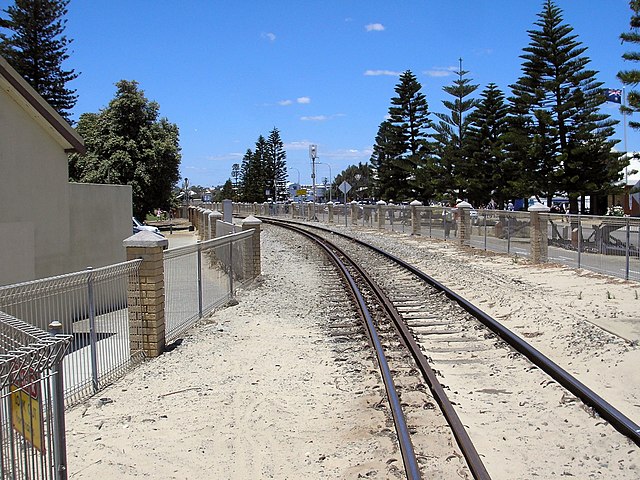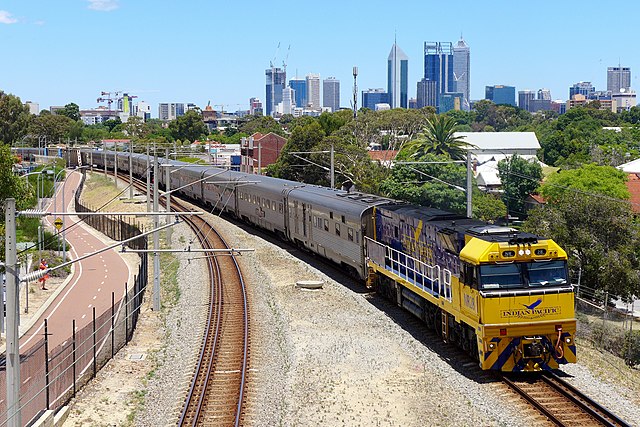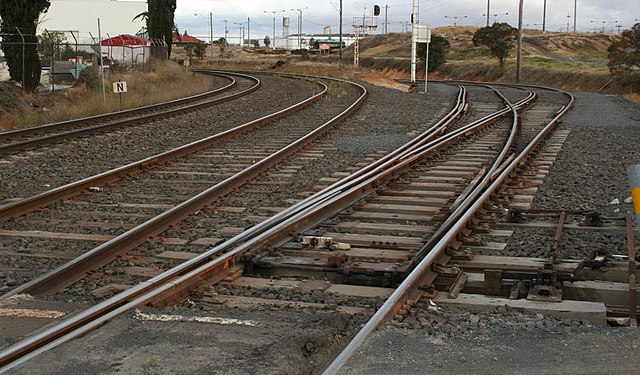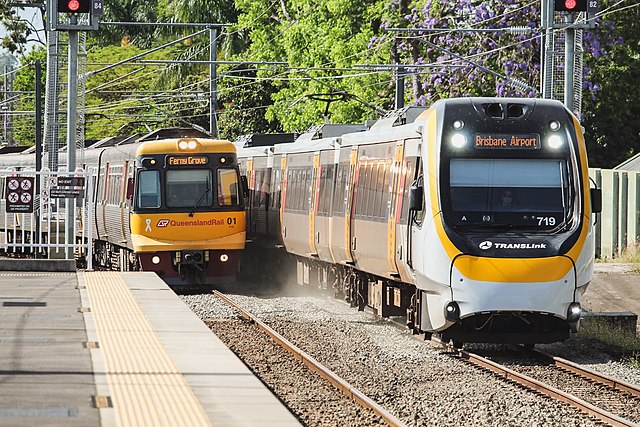Rail gauges in Australia display significant variations, which has presented an extremely difficult problem for rail transport on the Australian continent since the 19th century. As of 2022, there are 11,914 kilometres (7,403 mi) of narrow-gauge railways, 18,007 kilometres (11,189 mi) of standard gauge railways and 2,685 kilometres (1,668 mi) of broad gauge railways.
In the 19th century, each of the colonies of Australia adopted their own gauges.
Dual gauge 1,067 mm (3 ft 6 in) & (1,435 mm (4 ft 8+1⁄2 in) track on the Eastern Railway in December 2005
Dual gauge 1,067 mm (3 ft 6 in) and (1,435 mm (4 ft 8+1⁄2 in) Eastern Railway in Perth with an Indian Pacific service in December 2014
Dual gauge 1,435 mm (4 ft 8+1⁄2 in) and 1,600 mm (5 ft 3 in) track in Geelong
Outer Harbor station with gauge convertible sleepers in November 2005
Rail transport in Australia
Rail transport in Australia is a component of the Australian transport system. It is to a large extent state-based, as each state largely has its own operations, with the interstate network being developed ever since Australia's federation in 1901. As of 2022, the Australian rail network consists of a total of 32,929 kilometres (20,461 mi) of track built to three major track gauges: 18,007 kilometres (11,189 mi) of standard gauge, 2,685 kilometres (1,668 mi) of broad gauge, and 11,914 kilometres (7,403 mi) of narrow gauge lines. Additionally, about 1,400 kilometres (870 mi) of 610 mm / 2 ft gauge lines support the sugar-cane industry. 3,488 kilometres (2,167 mi), around 11 percent of the Australian heavy railways network route-kilometres are electrified.
Passenger trains in Queensland
The Spirit of Progress press launch with locomotive S302 at Spencer Street station prior to the demonstration run to Geelong, in 1937
Australia's first railway train, 26 September 1855, in NSW
Looking along the Trans-Australian Railway








